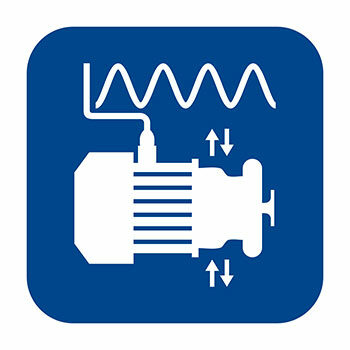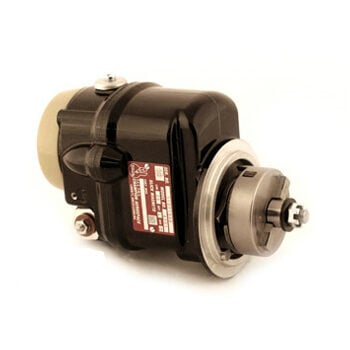Does Your Aircraft Magneto Need Servicing?
Magnetos (or “mags”) are a crucial component to any aircraft ignition system. Their durability and reliability make them an excellent independent power source in aircraft engines, but when they fail it could mean serious trouble. There are two ways to tell if your magnetos require overhaul or repair: by identifying mag-related problems with engine performance, and by diagnosing damage and wear through routine maintenance and inspection.
How to Know When Your Magnetos Are Performing Poorly
There are three indications that your magnetos may be damaged or worn: roughness in the engine, rpm drop during mag test, or ignition failure. Below, we’ll talk about how to troubleshoot some common magneto-related engine difficulties, how to identify their causes, and how to solve them.
Aircraft Engine Runs Rough
Few things will alarm a pilot like excessive and uneven vibration of the engine. Usually, this is discovered during mag check, and occurs when only the left or right magneto is engaged. This vibration is caused by one or more cylinders firing out of time or not at all. This kind of failure could be the result of a bad magneto, though it is just as frequently caused by a faulty wire or spark plug. If a cylinder is missing, the below troubleshooting process will help identify the source.

Identify a “Cold Cylinder”
- Allow the engine to cool, then remove the cowling.
- Start the engine and turn the ignition switch to the magneto that’s running rough.
- Adjust the RPM so that the engine is running at its roughest, then allow it to run for one to two minutes before shutting down
the engine. - Using a spray bottle, mist a small amount of water onto each exhaust stack, as close as possible to the cylinder. If a cylinder
is not firing, the water will not hiss and boil off as quickly. If you locate a “cold cylinder” fist check the spark plug and
work toward the magneto. (This test can also be performed with a gloved hand or an infrared thermometer.) - If no cold cylinder can be identified, skip to magneto troubleshooting as the cause is not likely a spark plug or lead.
- Carbon fouling is a sign the spark plug is not firing. Further inspection can identify or eliminate the spark plug as the failed
component. - If the spark plug is not the source, inspect the lead for damage. Test for proper grounding and the central conductor for continuity.
A high-tension lead tester can be used to ensure the central conductor is not arching to ground at the connections or the shielding. - If the spark plug and lead are eliminated as the cause for the cold cylinder, the magneto is likely the cause.

Magneto Timing
The magneto may be providing intermittent of off timed spark to all cylinders causing the engine to vibrate or run rough. Checking for these conditions will confirm the magneto requires repair or overhaul.
- Confirm that the magneto is timed to the engine in accordance with your engine maintenance manual.
- Check the magneto points gap and condition. Uneven wear of the points can affect timing. Frosted or burned marks on the points surface can be an indication of a failing capacitor.
- If the magneto cannot be timed or will not maintain time, service will be required. Some common causes can be a damaged distributor gear or loose contact screw.

RPM Drop
If the magneto is timed properly, yet the engine continues to run rough, there may be damage causing a direct shot to ground. Be following components can be inspected to confirm this condition.
- Condenser – Continuity through the capacitor is a direct short and the condenser should be replaced.
- Points – a cracked, or damaged isolation washer can allow a short to ground at the points.
- P-Lead – A damaged connection or isolation washer can allow a short to ground.
- Block – A block can allow a short to ground by way of carbon tracing. This condition is characterized by a carbon “trace” resembling an irregular hairline crack near the block towers.
- Coil – The coil can allow a short to ground if damaged. This damage will resemble a crack in the outer shell of the coil. Visual inspection of the coil requires disassembly and is beyond the scope of this guide. A failing coil can be spotted by a keen troubleshooter. The early failure pattern is characterized by a rough running engine when hot yet a smoother running engine when cold.
Total Ignition Failure
A short to ground can cause total ignition failure. If the magneto is timed and no short to ground can be detected, the problem may be one of the following:
- Distributor Gear – If the distributor gear is damaged, it may not be turning, or the spark may not deliver correctly to the block. Rotate the magneto while viewing the gear in the inspection window for an indication of this condition.
- Coil – Damage to the coil can weaken or eliminate the spark.
- Starting Assist – A failed staring vibrator or impulse coupling can cause a timed magneto to fire out of time or not at all.
Routine Maintenance of Aircraft Magnetos
The best way to service your aircraft magnetos, of course, is to follow manufacturer’s specifications for routine inspection and progressive maintenance. With some exceptions, manufacturers generally prescribe 100- and 500-hour service schedules for all magnetos. Service procedures are different for each magneto and each schedule. For proper procedures, consult the service manual and all manufacturer service bulletins.
Below are service bulletins for most models of Bendix and Slick magnetos. For additional resources on aircraft magnetos, click here.